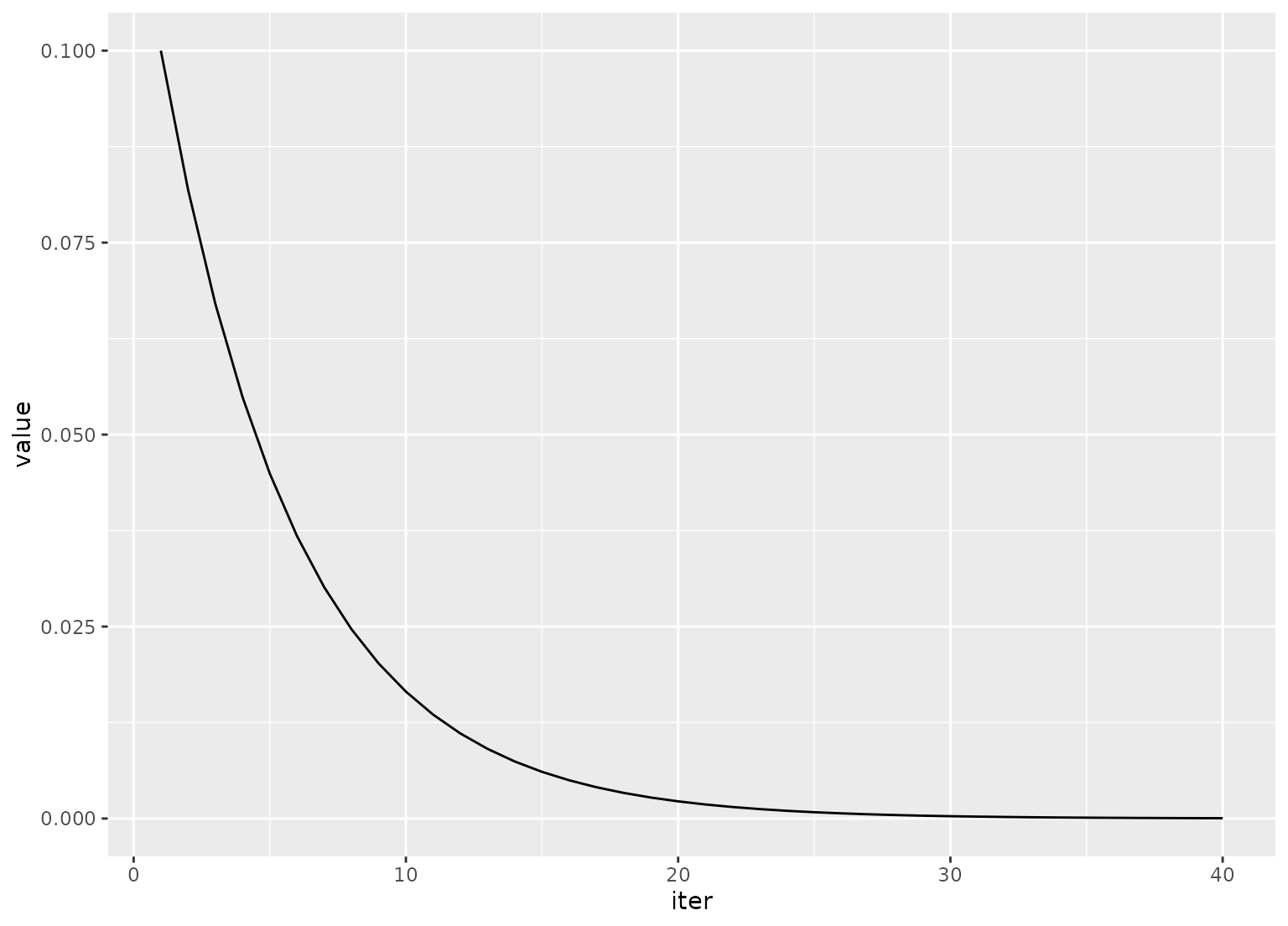expo_decay() can be used to increase or decrease a function exponentially
over iterations. This can be used to dynamically set parameters for
acquisition functions as iterations of Bayesian optimization proceed.
Usage
expo_decay(iter, start_val, limit_val, slope = 1/5)
Arguments
- iter
An integer for the current iteration number.
- start_val
The number returned for the first iteration.
- limit_val
The number that the process converges to over iterations.
- slope
A coefficient for the exponent to control the rate of decay. The
sign of the slope controls the direction of decay.
Value
A single numeric value.
Details
Note that, when used with the acquisition functions in tune(), a wrapper
would be required since only the first argument would be evaluated during
tuning.

